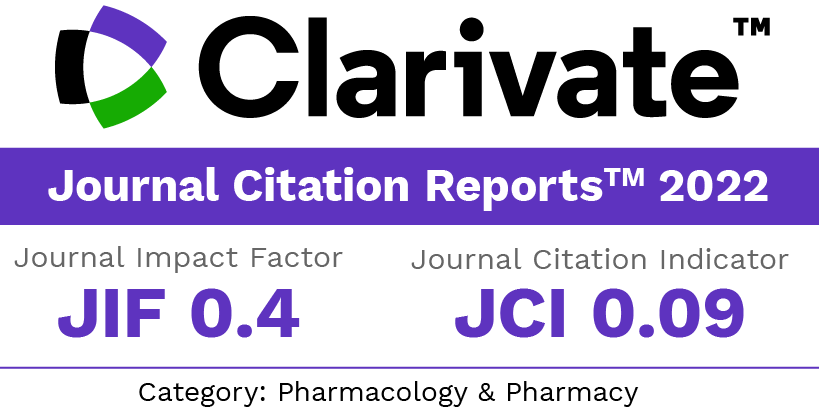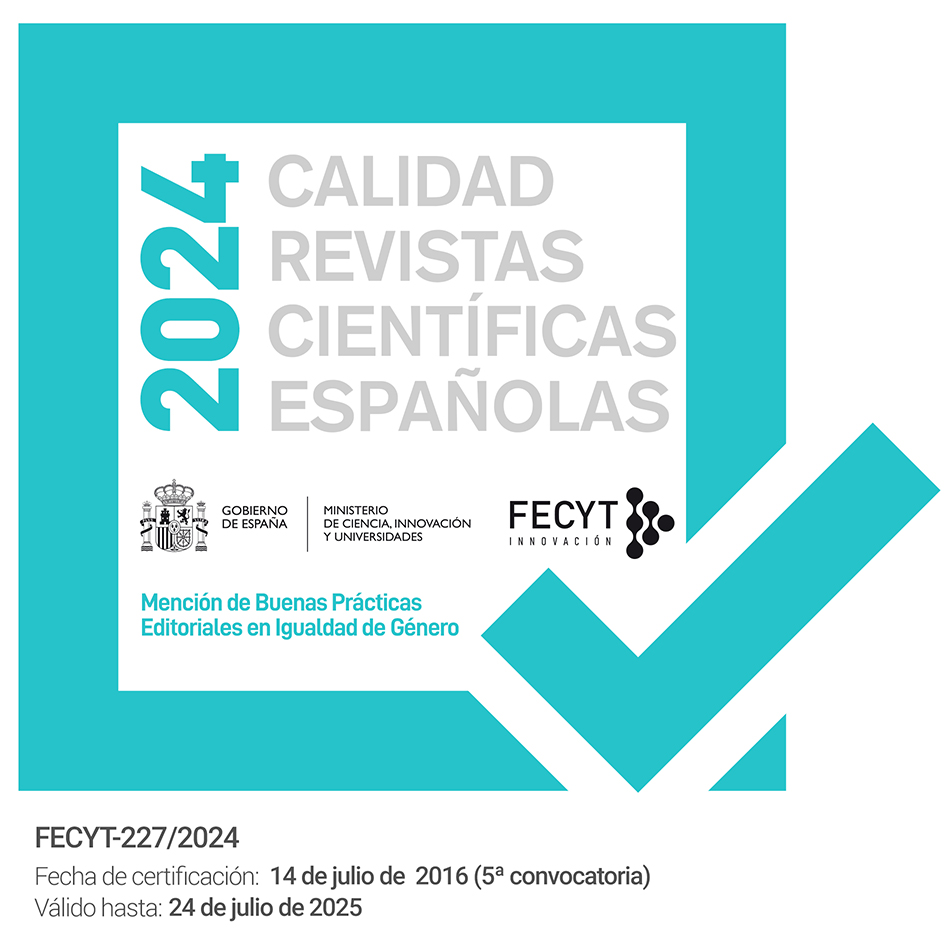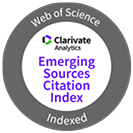The Albizia julibrissin and Caesalpinia decapetala extracts induces potential enzymes and cell growth inhibition via anti-acetylcholinesterase, anti-lipase, anti-glycation and cytotoxicity activity
DOI:
https://doi.org/10.30827/ars.v66i3.32202Keywords:
Cancer; Enzymes; lipase; High-performance Liquid Chromatography; Medicinal PlantsAbstract
Introduction: Medicinal plants are dynamic source of human health because of their therapeutic potential in treating various ailments. This study aimed to determine the anti-acetylcholinesterase, anti-lipase, anti-glycation and anti-cancer activities of Albizia julibrissin and Caesalpinia decapetala (family Fabaceae).
Methods: The leaf extracts were prepared to investigate their inhibitory capacities against acetylcholinesterase, lipase and glycation products. The anti-cancer potential was evaluated against HeLa, PC3 and 3T3 cell lines using MTT assay and HPLC analysis was done to quantify six compounds.
Results: Results indicated highest anti-acetylcholinesterase (IC50 2.391 µg/ml) activity in A. julibrissin methanolic extract while highest anti-lipase (114.9 µg/ml) and anti-glycation (43.69 µg/ml) activity was recorded in C. decapetala methanolic extract. Highest cytotoxic potential was also observed in C. decapetala against PC3, 3T3 and HeLa cell lines (144.3 ppm, 201.0 ppm and 236.0 ppm). In the end, HPLC showed that A. julibrissin exhibit the highest concentration of chlorogenic acid (56.06 ppm) and quercetin dihydrate (15.71 ppm) while C. decapetala leaves extracts possess highest concentration of gallic acid (73.55 ppm).
Conclusions: The results suggest that these extracts significantly inhibit the enzymatic activities, glycation products and the growth of cytotoxic cells and thus, can be used as novel pharmacological leads to treat various diseases.
Downloads
References
Wojtunik-Kulesza KA, Oniszczuk A, Oniszczuk T, Waksmundzka-Hajnos M. The influence of common free radicals and antioxidants on development of Alzheimer’s Disease. Biomed Pharmacother. 2016;78:39–49. doi:10.1016/j.biopha.2015.12.024. DOI: https://doi.org/10.1016/j.biopha.2015.12.024
Prince M, Bryce R, Albanese E, Wimo A, Ribeiro W, Ferri CP. The global prevalence of dementia: a systematic review and meta-analysis. Alzheimers Dement. 2013; 9(1):63–75. doi:10.1016/j.jalz.2012.11.007. DOI: https://doi.org/10.1016/j.jalz.2012.11.007
Yiannopoulou KG, Papageorgiou SG. Current and future treatments in Alzheimer disease: an update. J Cent Nerv Syst Dis. 2020; 12:1179573520907397. doi:10.1177/1179573520907397. DOI: https://doi.org/10.1177/1179573520907397
Köse LP, Gülçin İ, Gören AC, Namiesnik J, Martinez-Ayala AL, Gorinstein S. LC–MS/MS analysis, antioxidant and anticholinergic properties of galanga (Alpinia officinarum Hance) rhizomes. Ind Crops Prod. 2015; 74:712–21. doi:10.1016/j.indcrop.2015.05.034. DOI: https://doi.org/10.1016/j.indcrop.2015.05.034
Chu YC, Chang CH, Liao HR, Fu SL, Chen JJ. Anti-cancer and anti-inflammatory activities of three new chromone derivatives from the marine-derived Penicillium citrinum. Mar Drugs. 2021; 19(8):408. doi:10.3390/md19080408. DOI: https://doi.org/10.3390/md19080408
Hossain MJ, Al-Mamun M, Islam MR. Diabetes mellitus, the fastest growing global public health concern: Early detection should be focused. Health Sci Rep. 2024; 7(3):e2004. doi:10.1002/hsr2.2004. DOI: https://doi.org/10.1002/hsr2.2004
Mata-Torres G, Andrade-Cetto A, Espinoza-Hernandez F. Approaches to decrease hyperglycemia by targeting impaired hepatic glucose homeostasis using medicinal plants. Front Pharmacol. 2021; 12:809994. doi:10.3389/fphar.2021.809994. DOI: https://doi.org/10.3389/fphar.2021.809994
Ramsay RR, Tipton KF. Assessment of enzyme inhibition: a review with examples from the development of monoamine oxidase and cholinesterase inhibitory drugs. Molecules. 2017; 22(7):1192. doi:10.3390/molecules22071192. DOI: https://doi.org/10.3390/molecules22071192
Xu-Dong H, Li-Lin S, Yun-Feng C, Yi-Nan W, Qi Z, Sheng-Quan F, et al. Pancreatic lipase inhibitory constituents from Fructus Psoraleae. Chin J Nat Med. 2020; 18(5):369–78. doi:10.1016/S1875-5364(20)30043-1. DOI: https://doi.org/10.1016/S1875-5364(20)30043-1
de Sanjose S, Tsu VD. Prevention of cervical and breast cancer mortality in low-and middle-income countries: a window of opportunity. Int J Womens Health. 2019; 11:381–6. doi:10.2147/IJWH.S197115. DOI: https://doi.org/10.2147/IJWH.S197115
Kang J, Huo CH, Li Z, Li ZP. New ceramides from the flower of Albizia julibrissin. Chin Chem Lett. 2007; 18(2):181–4. doi:10.1016/j.cclet.2006.12.042. DOI: https://doi.org/10.1016/j.cclet.2006.12.042
Ikeda T, Fujiwara S, Araki K, Kinjo J, Nohara T, Miyoshi T. Cytotoxic glycosides from Albizia julibrissin. J Nat Prod. 1997; 60(2):102–7. doi:10.1021/np960556t. DOI: https://doi.org/10.1021/np960556t
Gallego MG, Skowyra M, Gordon MH, Azman NAM, Almajano MP. Effect of leaves of Caesalpinia decapetala on oxidative stability of oil-in-water emulsions. Antioxidants. 2017; 6(1):19. doi:10.3390/antiox6010019. DOI: https://doi.org/10.3390/antiox6010019
Parveen A, Akash MS, Rehman K, Mahmood Q, Qadir MI. Analgesic, anti-inflammatory and anti-pyretic activities of Caesalpinia decapetala. Bioimpacts. 2014; 4(1):43. doi:10.5681/bi.2014.013.
Chen Z, Zhang D, Guo JJ, Tao W, Gong RX, Yao L, et al. Active components, antioxidant, inhibition on metabolic syndrome-related enzymes, and monthly variations in mature leaf hawk tea. Molecules. 2019; 24(4):657. doi:10.3390/molecules24040657. DOI: https://doi.org/10.3390/molecules24040657
Franco RR, Zabisky LF, de Lima Júnior JP, Alves VH, Justino AB, Saraiva AL, et al. Antidiabetic effects of Syzygium cumini leaves: A non-hemolytic plant with potential against processes of oxidation, glycation, inflammation, and digestive enzymes catalysis. J Ethnopharmacol. 2020; 261:113132. doi:10.1016/j.jep.2020.113132. DOI: https://doi.org/10.1016/j.jep.2020.113132
Masood S, et al. Zn(II) and Cd(II) pincer complexes bearing meta alkylated pyridinium amidates; synthesis & preliminary anticancer studies. New J Chem. 2023;47(47):21845–53. DOI: https://doi.org/10.1039/D3NJ04131J
Mehmood R, Sadiq A, Alsantali RI, Mughal EU, Alsharif MA, Naeem N, et al. Synthesis and evaluation of 1,3,5-triaryl-2-pyrazoline derivatives as potent dual inhibitors of urease and α-glucosidase together with their cytotoxic, molecular modeling, and drug-likeness studies. ACS Omega. 2022; 7(4):3775–95. doi:10.1021/acsomega.1c06694. DOI: https://doi.org/10.1021/acsomega.1c06694
Abdelkhalek A, Salem MZ, Kordy AM, Salem AZ, Behiry SI. Antiviral, antifungal, and insecticidal activities of Eucalyptus bark extract: HPLC analysis of polyphenolic compounds. Microb Pathog. 2020; 147:104383. doi:10.1016/j.micpath.2020.104383. DOI: https://doi.org/10.1016/j.micpath.2020.104383
Tuzimski T, Petruczynik A. Determination of anti-Alzheimer’s disease activity of selected plant ingredients. Molecules. 2022; 27(10):3222. doi:10.3390/molecules27103222. DOI: https://doi.org/10.3390/molecules27103222
Ferreira J, Santos S, Pereira H. In vitro screening for acetylcholinesterase inhibition and antioxidant activity of Quercus suber cork and corkback extracts. Evid Based Complement Alternat Med. 2020;2020:3825629. doi:10.1155/2020/3825629. DOI: https://doi.org/10.1155/2020/3825629
Hussein ME, Mohamed OG, El-Fishawy AM, El-Askary HI, Hamed AA, Abdel-Aziz MM, et al. Anticholinesterase activity of budmunchiamine alkaloids revealed by comparative chemical profiling of two Albizia spp., molecular docking, and dynamic studies. Plants. 2022; 11(23):3286. doi:10.3390/plants11233286. DOI: https://doi.org/10.3390/plants11233286
Zengin G, Mahomoodally MF, Picot-Allain MCN, Sinan KI, Ak G, Etienne OK, et al. Chemical composition, biological properties and bioinformatics analysis of two Caesalpina species: A new light in the road from nature to pharmacy shelf. J Pharm Biomed Anal. 2021; 198, 114018. doi: 10.1016/j.jpba.2021.114018. DOI: https://doi.org/10.1016/j.jpba.2021.114018
Gomes AF, Almeida MP, Leite MF, Schwaiger S, Stuppner H, Halabalaki M, et al. Seasonal variation in the chemical composition of two chemotypes of Lippia alba. Food Chem. 2019; 273:186–93. doi:10.1016/j.foodchem.2017.11.089. DOI: https://doi.org/10.1016/j.foodchem.2017.11.089
Herrera T, Del Hierro JN, Fornari T, Reglero G, Martin D. Inhibitory effect of quinoa and fenugreek extracts on pancreatic lipase and α-amylase under in vitro traditional conditions or intestinal simulated conditions. Food Chem. 2019; 270:509–17. doi:10.1016/j.foodchem.2018.07.145. DOI: https://doi.org/10.1016/j.foodchem.2018.07.145
Ruangaram W, Kato E. Selection of Thai medicinal plants with anti-obesogenic potential via in vitro methods. Pharmaceuticals. 2020; 13(4):56. doi:10.3390/ph13040056. DOI: https://doi.org/10.3390/ph13040056
Sirichai P, Kittibunchakul S, Thangsiri S, On-Nom N, Chupeerach C, Temviriyanukul P, et al. Impact of drying processes on phenolics and in vitro health-related activities of indigenous plants in Thailand. Plants. 2022; 11(3):294. doi:10.3390/plants11030294. DOI: https://doi.org/10.3390/plants11030294
Wang R, Wang L, Zhang L, Wan S, Li C, Liu S. Solvents effect on phenolics, iridoids, antioxidant activity, antibacterial activity, and pancreatic lipase inhibition activity of noni (Morinda citrifolia L.) fruit extract. Food Chem. 2022; 377:131989. doi:10.1016/j.foodchem.2021.131989. DOI: https://doi.org/10.1016/j.foodchem.2021.131989
Zeng SL, Li SZ, Wei MY, Chen BZ, Li P, Zheng GD, et al. Evaluation of anti-lipase activity and bioactive flavonoids in the Citri Reticulatae Pericarpium from different harvest times. Phytomedicine. 2018; 43:103–9. doi:10.1016/j.phymed.2018.04.008. DOI: https://doi.org/10.1016/j.phymed.2018.04.008
Wei XH, Yang SJ, Liang N, Hu DY, Jin LH, Xue W, et al. Chemical constituents of Caesalpinia decapetala (Roth) alston. Molecules. 2013; 18(1):1325–36. doi:10.3390/molecules18011325. DOI: https://doi.org/10.3390/molecules18011325
Han Q, Qian Y, Wang X, Zhang Q, Cui J, Tu P, et al. Oleanane-type saponins and prosapogenins from Albizia julibrissin and their cytotoxic activities. Phytochemistry. 2021; 185:112674. doi:10.1016/j.phytochem.2021.112674. DOI: https://doi.org/10.1016/j.phytochem.2021.112674
Kavitha CN, Raja KD, Rao SK. Antitumor activity of Albizia lebbeck L. against Ehrlich ascites carcinoma in vivo and HeLa and A549 cell lines in vitro. J Cancer Res Ther. 2021; 17(2), 491-498. doi: 10.4103/jcrt.JCRT_454_9. DOI: https://doi.org/10.4103/jcrt.JCRT_454_19
Desai TH, Joshi SV. Anticancer activity of saponin isolated from Albizia lebbeck using various in vitro models. J Ethnopharm. 2019; 231, 494-502. doi: 10.016/j.jep.2018.11.004. DOI: https://doi.org/10.1016/j.jep.2018.11.004
Han Q, Qian Y, Wang X, Zhang Q, Cui J, Tu P, et al. Cytotoxic oleanane triterpenoid saponins from Albizia julibrissin. Fitoterapia. 2017; 121:183–93. doi:10.1016/j.fitote.2017.07.015. DOI: https://doi.org/10.1016/j.fitote.2017.07.015
Ghavidel A, Bak M, Hofmann T, Hosseinpourpia R, Vasilache V, Sandu I. Comparison of chemical compositions in wood and bark of Persian silk tree (Albizia julibrissin Durazz.). Wood Mater Sci Eng. 2022; 17(6):759–70. doi:10.1080/17480272.2021.1953141. DOI: https://doi.org/10.1080/17480272.2021.1953141
Li YT, Liu H, Meng WS, Zhou T, Gong ZP, Huang Y, Zheng L. Simultaneous determination of content of eight components in Caesalpinia decapetala by UPLC-MS/MS. Zhongguo Zhong yao za zhi= Zhongguo Zhongyao Zazhi= China J Chin Mater Med. 2022; 47(3): 692-700. doi: 10.19540/j.cnki.cjcmm.20211011.201.
Li W, Yang HJ. Isolation and identification of lignans and other phenolic constituents from the stem bark of Albizia julibrissin Durazz and evaluation of their nitric oxide inhibitory activity. Molecules. 2020; 25(9):2065. doi:10.3390/molecules25092065. DOI: https://doi.org/10.3390/molecules25092065
Van Kiem P, Van Minh C, Huong HT, Lee JJ, Kim YH. Caesaldecan, a cassane diterpenoid from the leaves of Caesalpinia decapetala. Chem Pharm Bull. 2005;53(4):428–30. doi:10.1248/cpb.53.428. DOI: https://doi.org/10.1248/cpb.53.428
Published
How to Cite
Issue
Section
License
Copyright (c) 2025 Gul-e-Saba Chaudhry

This work is licensed under a Creative Commons Attribution-NonCommercial-ShareAlike 4.0 International License.
The articles, which are published in this journal, are subject to the following terms in relation to the rights of patrimonial or exploitation:
- The authors will keep their copyright and guarantee to the journal the right of first publication of their work, which will be distributed with a Creative Commons BY-NC-SA 4.0 license that allows third parties to reuse the work whenever its author, quote the original source and do not make commercial use of it.
b. The authors may adopt other non-exclusive licensing agreements for the distribution of the published version of the work (e.g., deposit it in an institutional telematic file or publish it in a monographic volume) provided that the original source of its publication is indicated.
c. Authors are allowed and advised to disseminate their work through the Internet (e.g. in institutional repositories or on their website) before and during the submission process, which can produce interesting exchanges and increase citations of the published work. (See The effect of open access).























